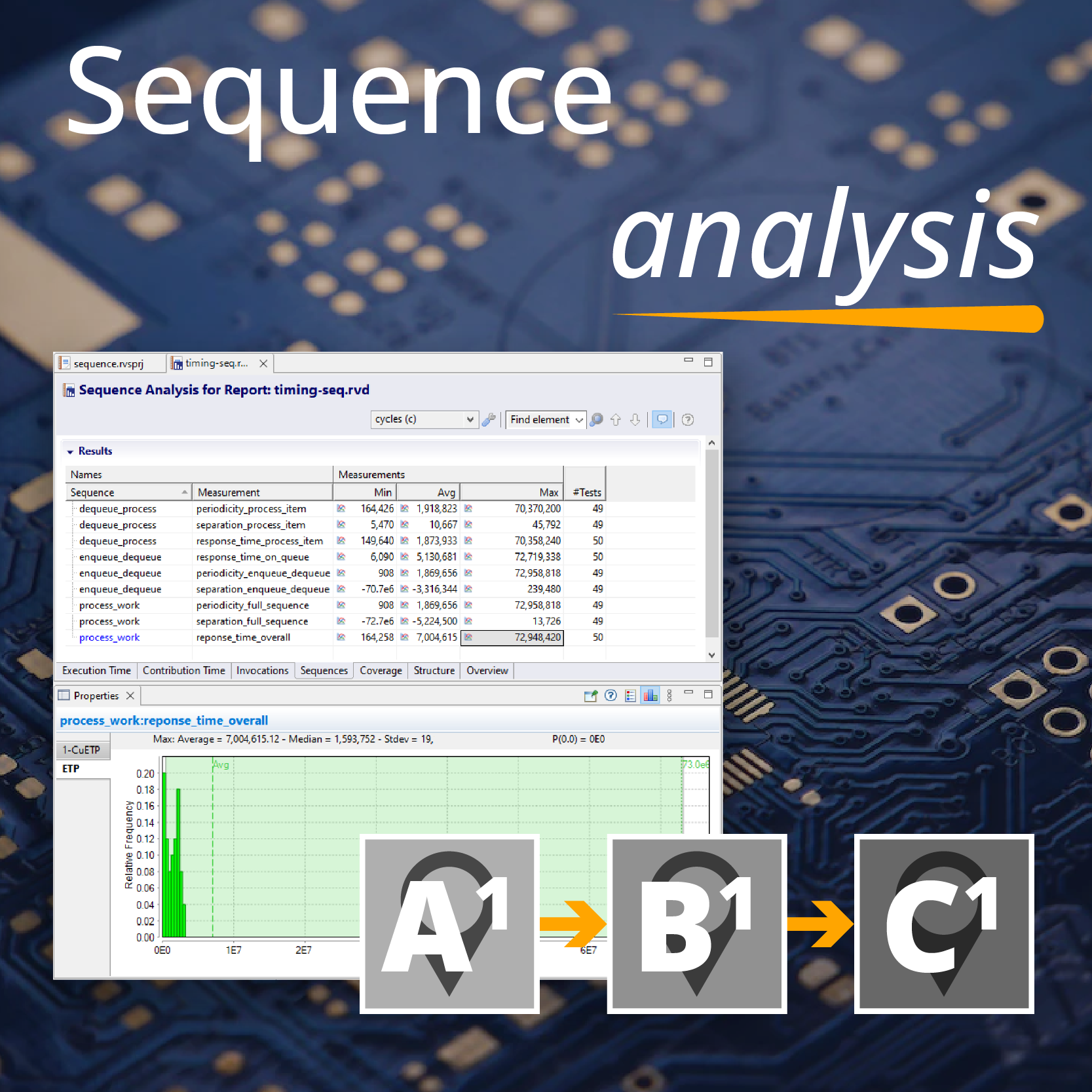If you've measured execution time, eliminating the context switches and the variability they cause (see our last blog post), you may still have a wide variety of execution times that arise from the thread you're measuring. A natural question is why this should happen. To be able to answer such questions, you need to have the right level of information.
Some embedded development products, such as integrated development environments (IDEs) or debuggers feature simple performance measurement tools that measure minimum, maximum and average execution times.
A more informative approach is to collect execution time profiles (ETPs), which shows the actual distribution of execution times.
Execution Time Profile (ETP)
 If the ETP shown was measured with a typical profiler that gives only minimum, maximum and average times, it would give the following results:
If the ETP shown was measured with a typical profiler that gives only minimum, maximum and average times, it would give the following results:
Minimum: 28,000 cycles
Maximum: 86,000 cycles
Average: 38,000 cycles
With only this information, it could lead to several incorrect assumptions about the timing of the software. It is considerably more informative to see the entire distribution, which can lead to a much greater understanding of the underlying behaviour of the system.
It is also helpful to be able to relate execution time measurements to specific test cases.
Execution time to test case mapping
 With this kind of information, if a specific test case has an unexpected impact, it can be identified and it can be repeated. Unusual timings can be related back to specific test cases to identify their cause.
With this kind of information, if a specific test case has an unexpected impact, it can be identified and it can be repeated. Unusual timings can be related back to specific test cases to identify their cause.
Next week: Minimize instrumentation overheads

 Hybrid electric pioneers, Ascendance, join Rapita Systems Trailblazer Partnership Program
Hybrid electric pioneers, Ascendance, join Rapita Systems Trailblazer Partnership Program
 Magline joins Rapita Trailblazer Partnership Program to support DO-178 Certification
Magline joins Rapita Trailblazer Partnership Program to support DO-178 Certification
 Eve Air Mobility joins Rapita Systems Trailblazer Partnership Program for eVTOL projects
Eve Air Mobility joins Rapita Systems Trailblazer Partnership Program for eVTOL projects
 How to certify multicore processors - what is everyone asking?
How to certify multicore processors - what is everyone asking?
 Data Coupling Basics in DO-178C
Data Coupling Basics in DO-178C
 Control Coupling Basics in DO-178C
Control Coupling Basics in DO-178C
 Components in Data Coupling and Control Coupling
Components in Data Coupling and Control Coupling
 DO-278A Guidance: Introduction to RTCA DO-278 approval
DO-278A Guidance: Introduction to RTCA DO-278 approval
 ISO 26262
ISO 26262
 Data Coupling & Control Coupling
Data Coupling & Control Coupling
 Verifying additional code for DO-178C
Verifying additional code for DO-178C
 DO-178C Multicore In-person Training (Bristol)
DO-178C Multicore In-person Training (Bristol)
 DO-178C Multicore In-person Training (Fort Worth, TX)
DO-178C Multicore In-person Training (Fort Worth, TX)
 DO-178C Multicore In-person Training (Toulouse)
DO-178C Multicore In-person Training (Toulouse)






















